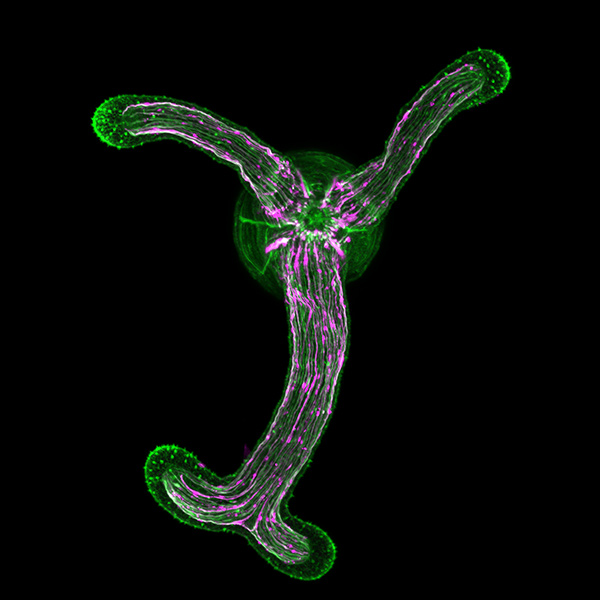
Hox genes encode conserved developmental transcription factors that govern anterior-posterior (A-P) pattering in diverse bilaterian animals, which display bilateral symmetry. Although Hox genes are also present within Cnidaria, these simple animals lack a definitive A-P axis, leaving it unclear how and when a functionally integrated Hox code arose during evolution. In this work, we used short hairpin RNA (shRNA)-mediated knockdown and CRISPR-Cas9 mutagenesis to demonstrate that a Hox-Gbx network controls radial segmentation of the larval endoderm during development of the sea anemone Nematostella vectensis. Loss of Hox-Gbx activity also elicits marked defects in tentacle patterning along the directive (orthogonal) axis of primary polyps. On the basis of our results, we proposed that an axial Hox code may have controlled body patterning and tissue segmentation before the evolution of the bilaterian A-P axis.
From:
An axial Hox code controls tissue segmentation and body patterning in Nematostella vectensis.
He, S., Del Viso, F., Chen, C.-Y., Ikmi, A., Kroesen, A.E., Gibson, M.C.
Science (2018) 361: 1377-1380.
PubMed